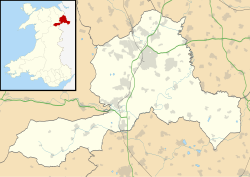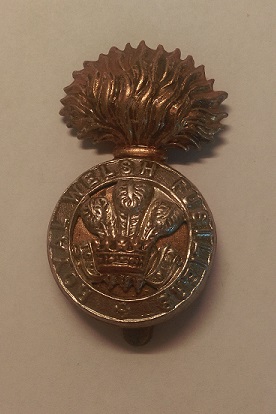
The Royal Welch Fusiliers (Welsh: Ffiwsilwyr Brenhinol Cymreig) was a line infantry regiment of the British Army, and part of the Prince of Wales's Division, that was founded in 1689; shortly after the Glorious Revolution. In 1702, it was designated a fusilier regiment and became the Welch Regiment of Fusiliers; the prefix "Royal" was added in 1713, then confirmed in 1714 when George I named it the Prince of Wales's Own Royal Regiment of Welsh Fusiliers. In 1751, after reforms that standardised the naming and numbering of regiments, it became the 23rd Regiment of Foot (Royal Welsh Fuzileers). In 1881, the final title of the regiment was adopted.
The Denbighshire Hussars was a Welsh Yeomanry regiment of the British Army formed in 1794. It saw service in the First World War before being converted into a unit of the Royal Artillery. The lineage has been continued by 398 Squadron, Royal Logistic Corps.
The 158th Infantry Brigade was an infantry brigade of the British Army that served in both the First and Second World Wars, before being disbanded in 1968. Throughout its existence the brigade was assigned to the 53rd (Welsh) Infantry Division and was composed almost entirely of Territorial battalions from the Royal Welch Fusiliers.

Hightown Barracks is a military installation in Wrexham, Wales.

The Titchfield Street drill hall is a former military installation in Kilmarnock.
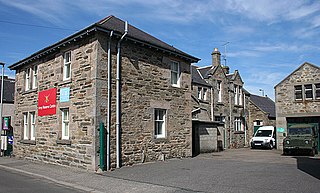
The Union Street drill hall is a military installation in Keith, Scotland.

Mitcham Road Barracks is an Army Reserve centre in Croydon, London, with a history dating back to 1794.

The Phoenix Street drill hall is a former military installation in Lancaster, Lancashire.

Dare Wilson Barracks, is a military installation in Hexham, Northumberland. The building is named after Major General Dare Wilson who was commissioned into the Royal Northumberland Fusiliers and commanded 22 Special Air Service Regiment in the early 1960s.

The Fenkle Street drill hall is a former military installation in Alnwick, Northumberland. It is a Grade II* listed building and is now used by the Northumberland County Council.

Londesborough Barracks is a military installation in Kingston upon Hull, England.
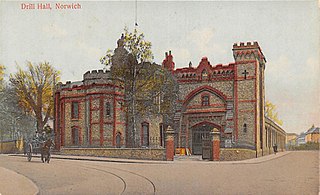
The Chapel Field Road drill hall was a military installation in Norwich, Norfolk.

The Prescott Street drill hall is a former military installation in Halifax, West Yorkshire, England. It is a Grade II listed building.
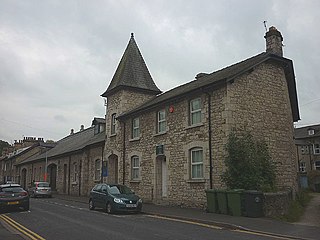
The Queen Katherine Street drill hall is a former military installation located on Queen Katherine Street, off Aynam Road, in Kendal, Cumbria, England.

The High West Street drill hall is a former military installation in Dorchester, Dorset. It is a Grade II listed building.
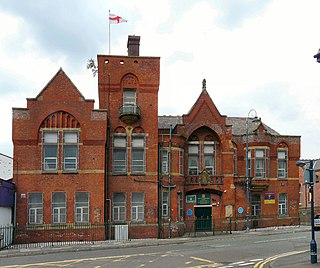
The Old Street drill hall is a former military installation in Ashton-under-Lyne, Greater Manchester, England.
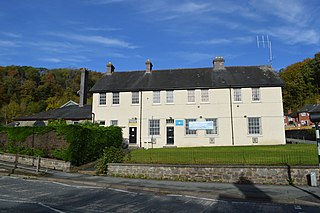
The Brook Street drill hall is a military installation in Welshpool.

The London Guards is a formation within the British Army comprising the reserve companies of the Grenadier, Coldstream, Scots and Irish Guards. On formation these companies drew their personnel from the London Regiment and it traces its history back to the formation of that regiment in 1908 when 26 separate Volunteer Force battalions were brought together. The London Guards is not a regiment, the companies wear the uniform, and follow the traditions, of their foot guards regiment.
The 1st Denbighshire Rifle Volunteers, later 4th (Denbighshire) Battalion, Royal Welch Fusiliers, was a Welsh unit of the British Army's auxiliary forces. First raised in 1860, it served as a pioneer battalion with the 47th Division on the Western Front during World War I and with the 53rd (Welsh) Division in North West Europe during World War II. It continued in the postwar Territorial Army through a series of mergers until finally amalgamating with another Welsh battalion in 1999.
The Denbighshire Militia, later the Royal Denbighshire Rifles was an auxiliary regiment reorganised in the Welsh county of Denbighshire during the 18th Century from earlier precursor units. Primarily intended for home defence, it provided a contingent for service in France in the closing stages of the Napoleonic War. After a series of short-lived mergers with other Welsh militia regiments it became part of the Royal Welsh Fusiliers, It served as a Special Reserve training unit in World War I. After 1921 the militia had only a shadowy existence until its final abolition in 1953.

